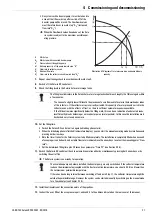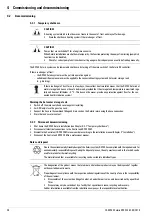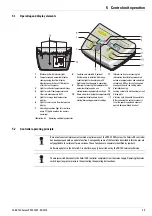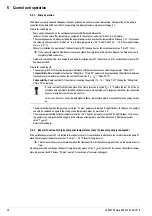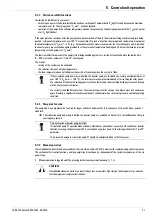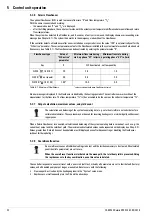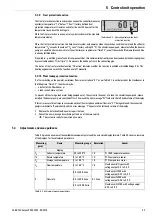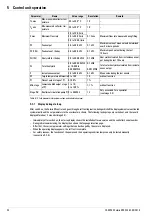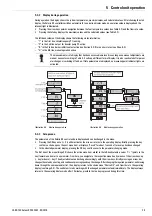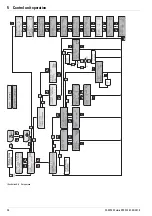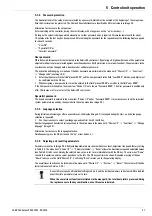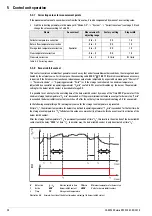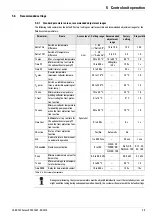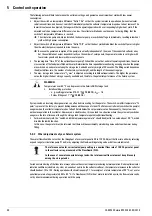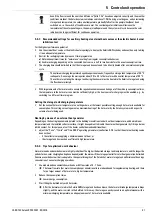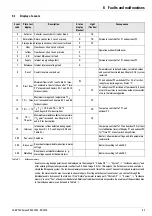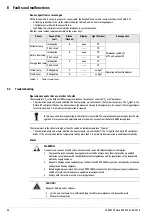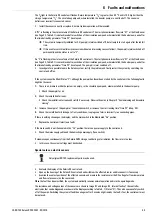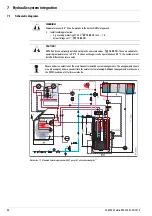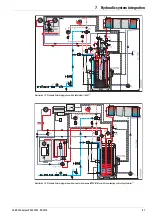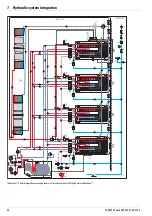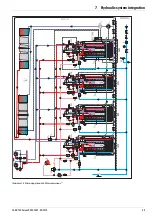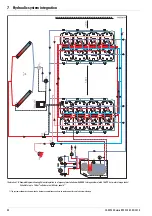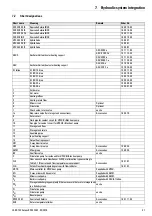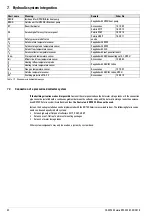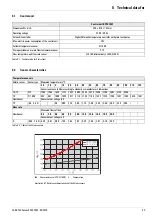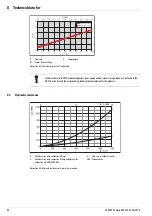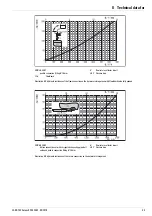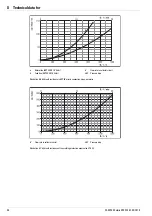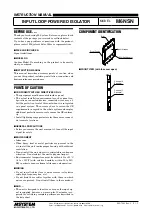
5
x
Control unit operation
41
FA ROTEX Solaris RPS3 25M - 03/2010
5.4.3 Recommended settings for auxiliary heating via external heat sources or the electric heater, burner
inhibit contact
For the highest performance potential:
•
Use the external heat source or the electric heater sparingly to heat up the Solaris DHW cylinder, and even then only to bring
it to an adequate temperature.
•
Restrict the recharging times by means of timer programmes:
a)
Determine optimum times for "normal use" resulting from regular consumption behaviour.
b)
Enable recharging, depending on the connected heat source, a half to two hours before the usual consumption time.
•
The charging time should be limited so that the storage tank does not need to be directly heated after a normal consumption
cycle.
•
With larger amounts of hot water and to ensure the required convenience even during out of the ordinary consumption times,
the temperature in the hot water zone must be sufficiently high, or the heat source for charging must be enabled, e. g. by
switching to a different timer program.
Setting the storage tank charging temperature
•
Set the nominal hot water temperature to a setting where, at the lowest possible setting, enough hot water is available for
consumption. This setting serves to guarantee maximum heating of the hot water by the Solaris system with a specific
volume of water being used.
Heating by means of an external heat generator
Depending on the heating requirements (related to the building's insulation standard, outdoor temperature, and desired room
temperatures) and the installed collector surface, it might be expedient to disable the external heat generator by fitting a burner
inhibit contact. For this purpose, also if the heater control demands additional heat:
•
adjust the "P min", "T
S
min" and "Time VBSK" operating parameters (see Section 5.3.8) so that the external heating source
does not heat
– if the collectors are supplying a minimum amount of heat, or
– the storage tank has reached a sufficiently high temperature.
5.4.4 Tips for optimised user behaviour
Hot water needs and user behaviour are highly individual. The higher the desired storage tank temperature is, and the longer the
periods for non-solar charging heating have been adjusted, the more will the storage potential for solar heat generation be limited.
Conscious user behaviour that is adapted to the special strengths of the Solaris hot water storage tank will minimise the energy
consumption of non-solar charging operations.
•
Use modern and convenient shower heads with flow rates of 5 - 7 l/min.
The lower flow rate (hot water consumption per minute) results in a reduced need for supplementary heating, and there-
fore a larger amount of hot water at a higher temperature.
•
Reduce the consumption times.
Lower energy consumption.
•
Start filling the bathtub only with hot water.
After the hot water stored in the Solaris DHW storage tank has been drawn, the hot water discharge temperature drops
slightly, and the water is mixed in the bathtub. In this way, the storage capacity is used in an optimal manner with a
minimum charging temperature; an adequate amount of hot water is available.
Even if the flow rate and the switch-on difference "Delta T On", have been adjusted correctly, and the weather
conditions are ideal, the Solaris system sometimes switches off. With a rising or setting sun, and an increasing
storage tank temperature, the solar panel temperature gradually falls after the pump(s) has(have) been
switched on, i.e. the switch-off conditions are met. The continuing solar radiation will increase the
temperatureof the solar panels again, the pump(s) will operate and the system will cycle because the solar
radiation is no longer sufficient for continuous operation.
The optimum charging temperature depends on personal needs; frequently a storage tank temperature of 50 °C
is adequate. An average shower requires about 30 to 50 l of hot water with an outlet temperature of 40 °C.
The cold water entering the storage tank during the shower must be heated in the Solaris storage tank using
the flow heater principle.

